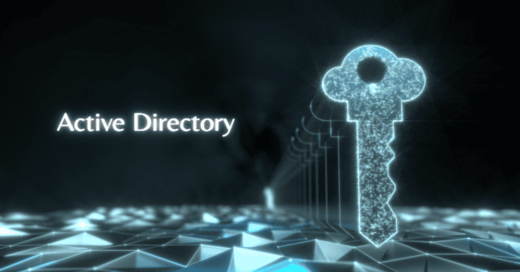Attacks against technology are nothing new. However, incidents have increased in both volume and variety over the past decade. If your organization has an infrastructure, you're at risk. However, understanding the relative strengths and weaknesses of your tools can significantly improve your protection.
Proactively monitoring Windows Active Directory is critical. A system of active change management can help you identify minor problems which can quickly spiral and cause issues network-wide. In this blog, you'll discover some of the risks of failure to effectively monitor, and how to develop a smart approach to continual monitoring.
Risks of NOT Monitoring Active Directory
Systematic monitoring is necessary to ensure consistent service delivery in a large environment with many domain controllers, domains, or physical sites. As a distributed service, Active Directory relies upon many interdependent services distributed across many devices and in many remote locations.
As you increase the size of your network to take advantage of the scalability of Active Directory, monitoring becomes more important. It helps you avoid potentially serious problems, including:
- Security Policy Failure: Effective application of security policies requires correct replication of the SYSVOL policy.
- Account Lockout: Accounts and logins can fail if there are issues with your PDC emulator
- Domain Controller: Without sufficient disk space, you can experience domain controller functionality issues.
- Application Issues: Critical applications can cease operations if queries do not work.
- Directory Data Quality Problems: Data replication failures can require extensive time to resolve.
Specific Challenges with Active Directory Monitoring and Windows Environment Administration
Much like any other tool, Active Directory has unique strengths and weaknesses. There are specific challenges associated with maintaining compliance and security, such as:
- Effective designation of administrative user privileges,
- Change management,
- Troubleshooting, and
- Understanding available audit information.
What Does an Effective Active Directory Monitoring Process Look Like?
With Active Directory, an effective change management process is going to involve two core components:
- Change Administration: Policy-based administration, change analysis, & task automation
- Change Monitoring: Centralized auditing, real-time change detection, & human-readable reporting
These two components comprise change management, which is defined as the process of making decisions about your network. This is informed by a combination of effective security policy and change monitoring.
To implement change management with Active Directory, your organization needs a combination of smart policy and automation-based tools. Specifically, you need smart tools to effectively monitor for changes.
For more information on high-level Active Directory Monitoring and Management, we recommend Change Monitoring vs. Control vs Management: What's the Difference?
Best Practices for Active Directory Monitoring
1. Mechanisms for Change Control
Your organization needs to implement controls around users with the ability to make changes. This should include accountability around administrative users. Every change made through active directory should be logged for review during daily audits, even if it's made by an administrative account.
Finally, logs should include sufficient information to detect red flags that could indicate account compromises, such as location, device, and time.
2. The Ability to Understand the "Quality" of Changes
Some changes via AD can move your organization out of compliance in a matter of seconds. Other changes attributed to administrative accounts can have a net negative impact on security, even if you're not dealing with a case of account compromise.
As previously mentioned, a key challenge of AD monitoring is the fact that the logs can be challenging to decipher. Using a file integrity monitoring tool like CimTrak can allow you to determine in real-time if changes are negative, positive, or neutral.
3. Structured Change Workflows
In addition to accountability concepts, a structured approach to change workflows is necessary for sufficient oversight. This is accomplished with a comprehensive information security policy, which is required for PCI compliance and other types of regulatory compliance. Having built-in processes for the implementation and administration of changes is critical for organizations of any size, even if your network is not particularly complex yet.
4. The Ability to Understand and Act on Audits in Real-Time
While PCI requirement 10.6 dictates the daily review of audit logs, exceeding this requirement can be necessary to gain real-time insight into your network. A third-party tool can introduce automation into the audit review process by notifying administrative users in real-time when a suspicious change is logged.
By using CimTrak for human-readable intelligence into changes, you can immediately piece together the context of a change, including where it originated, who is responsible, and how it impacts your network. Contextually rich, human-readable audit logs can enable true real-time change management with Active Directory.
CimTrak for Active Directory: Learn More
CimTrak for Active Directory helps organizations monitor their directory services for deviations, with sensitivity to common issues that often go undetected in large environments. With human-readable logs, built-in intelligence, and accountability, CimTrak is designed for awareness.
Tags:
Cybersecurity
July 26, 2016




